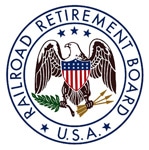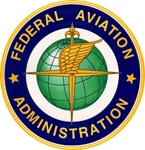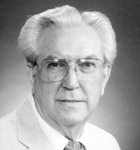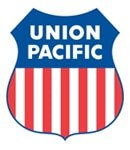
The following questions and answers summarize the findings of these reports.
1. What were the assets of the railroad retirement and railroad unemployment insurance systems last year?
As of Sept. 30, 2012, total railroad retirement system assets, comprising assets managed by the National Railroad Retirement Investment Trust and the railroad retirement system accounts at the Treasury, equaled $25.3 billion. The Trust was established by the Railroad Retirement and Survivors’ Improvement Act of 2001 to manage and invest railroad retirement assets. The cash balance of the railroad unemployment insurance system was $175.3 million at the end of fiscal year 2012.
2. What was the conclusion of the 2013 report on the financial condition of the railroad retirement system?
The overall conclusion was that, barring a sudden, unanticipated, large decrease in railroad employment or substantial investment losses, the railroad retirement system will experience no cash-flow problems during the next 25 years. The long-term stability of the system, however, is still uncertain. Under the current financing structure, actual levels of railroad employment and investment return over the coming years will largely determine whether corrective action is necessary.
3. What methods were used in forecasting the financial condition of the railroad retirement system?
The 2013 report projected the various components of income and outgo of the railroad retirement system under three employment assumptions, intended to provide an optimistic, moderate and pessimistic outlook, for the 25 calendar years 2013-2037. The projections of these components were combined and the investment income calculated to produce the projected balances in the railroad retirement accounts at the end of each projection year.
Projecting income and outgo under optimistic, moderate and pessimistic employment assumptions, the valuation indicated no cash-flow problems occur throughout the 25-year projection period under any of the assumptions.
4. How do the results of the 2013 report compare with those of the 2012 report?
The projected tier II tax rates for each calendar year are either the same or lower than in last year’s report. (Railroad retirement payroll taxes, like railroad retirement benefits, are calculated on a two-tier basis.) The projected combined account balances are higher at the end of each year, except under the moderate employment assumption where lower tax rates lead to lower account balances in 2034-2037.
The favorable comparison with last year was due to overall favorable economic and employment experience, with the largest impacts resulting from employment exceeding the RRB’s projections and actual investment return of approximately 13.9 percent exceeding the expected investment return of 7 percent in calendar year 2012.
5. Did the 2013 report on the financial condition of the railroad retirement system recommend any railroad retirement payroll tax rate changes?
The report did not recommend any change in the rate of tax imposed by current law on employers and employees.
6. What were the findings of the 2013 report on the financial condition of the railroad unemployment insurance system?
The RRB’s 2013 railroad unemployment insurance financial report was also generally favorable. Even as maximum benefit rates increase 42 percent (from $66 to $94) from 2012 to 2023, experience-based contribution rates are expected to keep the unemployment insurance system solvent, except for possible small, short-term cash flow problems in fiscal years 2015 and 2016 under the pessimistic assumption. However, projections show quick repayment of any loans by the end of each fiscal year.
Unemployment levels are the single most significant factor affecting the financial status of the railroad unemployment insurance system. However, the system’s experience-rating provisions, which adjust contribution rates for changing benefit levels, and its surcharge trigger for maintaining a minimum balance, help to ensure financial stability in the advent of adverse economic conditions.
Under experience-rating provisions, each employer’s contribution rate is determined by the RRB on the basis of benefit payments made to the railroad’s employees. Even under the report’s most pessimistic assumption, the average employer contribution rate remains well below the maximum throughout the projection period.
No surcharge is in effect in calendar year 2013, and the report predicts one will not be required in calendar 2014. A surcharge of 1.5 percent is likely in calendar years 2015 and 2016.
7. What methods were used to evaluate the financial condition of the railroad unemployment insurance system?
The economic and employment assumptions used in the unemployment insurance report corresponded to those used in the 2013 report on the financial condition of the retirement system. Projections were made for various components of income and outgo under each of the three employment assumptions, but for the period 2013-2023, rather than a 25-year period.
8. Did the 2013 report on the railroad unemployment insurance system recommend any financing changes to the system?
No financing changes were recommended at this time by the report.
 WASHINGTON –The U.S. Department of Transportation’s Federal Aviation Administration (FAA), working with the U.S. Department of Labor’s Occupational Safety and Health Administration (OSHA), Aug. 22 issued a final policy for improving workplace safety for aircraft cabin crewmembers.
WASHINGTON –The U.S. Department of Transportation’s Federal Aviation Administration (FAA), working with the U.S. Department of Labor’s Occupational Safety and Health Administration (OSHA), Aug. 22 issued a final policy for improving workplace safety for aircraft cabin crewmembers. The Federal Railroad Administration has issued a guidance memorandum for Emergency Order 28, which seeks to prevent trains operating on mainline tracks or sidings from moving unintentionally.
The Federal Railroad Administration has issued a guidance memorandum for Emergency Order 28, which seeks to prevent trains operating on mainline tracks or sidings from moving unintentionally. Clearwater Fla.-based Avantair’s assets will be sold off and the company liquidated after it failed to meet a deadline last week to contest an involuntary Chapter 7 filing in the Florida Middle District U.S. Bankruptcy Court in Tampa.
Clearwater Fla.-based Avantair’s assets will be sold off and the company liquidated after it failed to meet a deadline last week to contest an involuntary Chapter 7 filing in the Florida Middle District U.S. Bankruptcy Court in Tampa.
 OMAHA, Nebraska — At least two major U.S. freight railroads are seeking to install cameras in their locomotives to make sure crews are following rules and avoiding cellphone use.
OMAHA, Nebraska — At least two major U.S. freight railroads are seeking to install cameras in their locomotives to make sure crews are following rules and avoiding cellphone use.